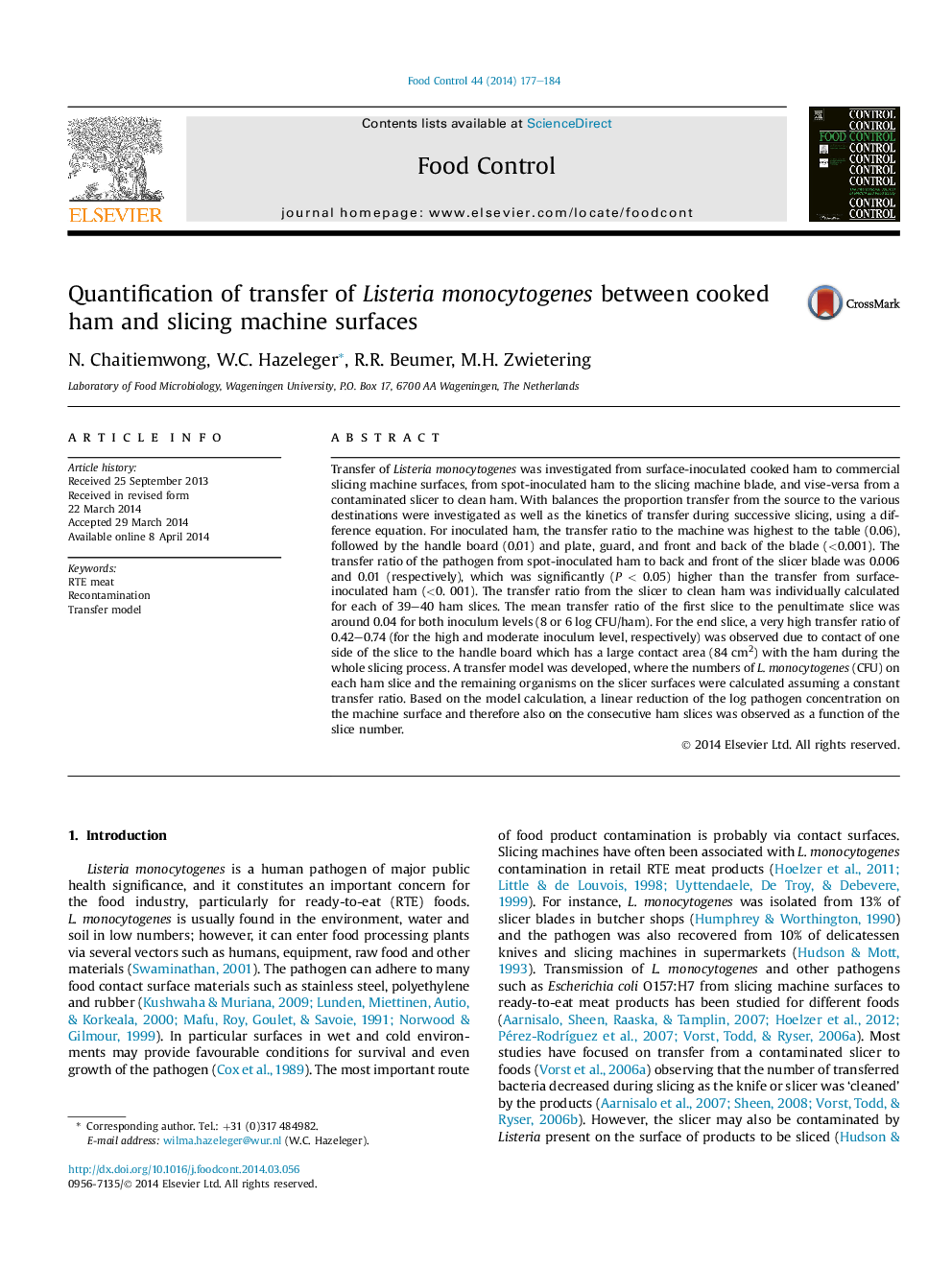| Article ID | Journal | Published Year | Pages | File Type |
|---|---|---|---|---|
| 4559351 | Food Control | 2014 | 8 Pages |
•Presence of the pathogen micro-colonies on food surfaces increases transfer of the pathogen to the blade.•High numbers of L. monocytogenes on the end slice transferred from the contaminated slicer could pose a high risk of consumer.•A log-linear reduction of the pathogen transferred to each ham slice was a function of slice number.
Transfer of Listeria monocytogenes was investigated from surface-inoculated cooked ham to commercial slicing machine surfaces, from spot-inoculated ham to the slicing machine blade, and vise-versa from a contaminated slicer to clean ham. With balances the proportion transfer from the source to the various destinations were investigated as well as the kinetics of transfer during successive slicing, using a difference equation. For inoculated ham, the transfer ratio to the machine was highest to the table (0.06), followed by the handle board (0.01) and plate, guard, and front and back of the blade (<0.001). The transfer ratio of the pathogen from spot-inoculated ham to back and front of the slicer blade was 0.006 and 0.01 (respectively), which was significantly (P < 0.05) higher than the transfer from surface-inoculated ham (<0. 001). The transfer ratio from the slicer to clean ham was individually calculated for each of 39–40 ham slices. The mean transfer ratio of the first slice to the penultimate slice was around 0.04 for both inoculum levels (8 or 6 log CFU/ham). For the end slice, a very high transfer ratio of 0.42–0.74 (for the high and moderate inoculum level, respectively) was observed due to contact of one side of the slice to the handle board which has a large contact area (84 cm2) with the ham during the whole slicing process. A transfer model was developed, where the numbers of L. monocytogenes (CFU) on each ham slice and the remaining organisms on the slicer surfaces were calculated assuming a constant transfer ratio. Based on the model calculation, a linear reduction of the log pathogen concentration on the machine surface and therefore also on the consecutive ham slices was observed as a function of the slice number.
